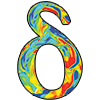SpaceClaim Training Course — Ep 01
Session 3
- Episode
- 01
- Run Time
- 10m 29s
- Published
- Oct 15, 2025
- Topic
- SpaceClaim
- Course Progress
- 0%
Interface Configuration: Workspace, Docking Layout, Units, and Visualization Tools
This session focuses on exploring some of the most valuable features within SpaceClaim that enable more precise and efficient design workflows. We’ll begin by introducing utilities like Snap to Grid and Snap to Angle, which facilitate cleaner and more accurate geometry creation. Subsequently, we’ll examine the Display tab, which enhances how we visualize and evaluate geometries. Understanding these capabilities will enable you to develop models with superior precision and organization. The overall objective of this training session is to elevate design quality and familiarize you with practical tools that support effective modeling workflows.
1. Grid Snapping Functionality
When the Snap to Grid feature is activated, sketch elements such as lines and points must begin or terminate precisely at grid intersection points. This promotes more accurate geometry creation, ensuring consistency and precision throughout the modeling workflow. For instance, when constructing a rectangular shape, the software automatically aligns the initial point to the closest grid intersection. This capability proves extremely valuable for generating accurate geometry. Conversely, when this feature is deactivated, users gain additional freedom. While enabling it supports the creation of precise and well-organized designs, disabling it offers greater flexibility and creative liberty during geometry sketching.
2. Angular Snapping Capability
The Snap to Angle feature simplifies drawing lines at conventional and commonly-used angles. Typically, when sketching lines, the software might display irregular angles like 46.7 degrees. By activating Snap to Angle, the software automatically constrains lines to standard angular increments. Consequently, users can easily locate angles such as 15°, 30°, or 45°. This functionality enhances both precision and efficiency in establishing clean and standardized angular relationships, streamlining the design workflow and improving convenience.
3. Visualization Settings and Graphics Display
Another essential area is found within the Display Tab under Graphics, offering multiple visualization modes:
Wireframe: Renders geometry using only edge lines, without surface fills.
Shaded: Presents geometry with basic surface shading applied.
Enhanced Shaded: Offers advanced visual rendering for superior surface definition.
Hidden Line: Shows both visible and concealed edges of the geometry, allowing users to view lines behind surfaces.
Hidden Line Removed: Similar to shaded display but excludes hidden edges, resulting in cleaner geometry presentation.
Furthermore, the Split Viewports feature enables users to partition the display area into multiple concurrent views:
Two Vertical Viewports: Display the geometry from two different angles simultaneously.
Four Viewports: Provide four distinct perspectives (such as top, front, side, and isometric), enhancing clarity and facilitating analysis of complex geometries.
This visualization versatility helps users examine every dimension of their models and ensures comprehensive understanding and validation throughout the design process.
Session Summary
The integration of these tools—Grid Snapping, Angular Snapping, and Display Configuration Options—delivers robust support for creating accurate geometries and achieving optimal visualization in ANSYS SpaceClaim.
- Snap to Grid guarantees precise element positioning.
- Snap to Angle streamlines work with standard angular measurements.
- Display Modes and Split Views enhance model visualization and comprehension.
Collectively, these features improve both design accuracy and workflow productivity.

